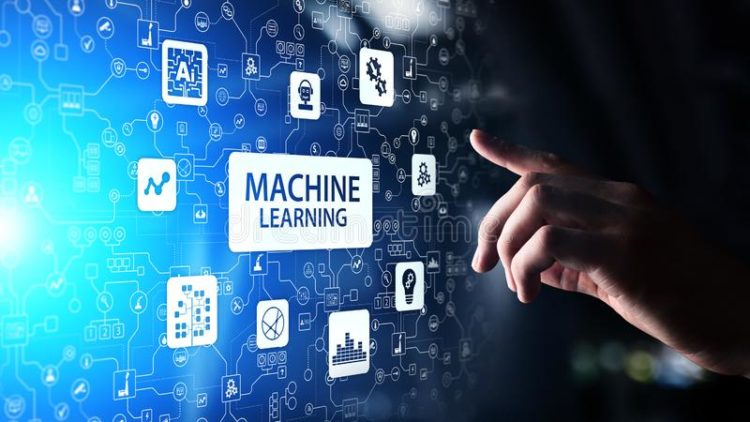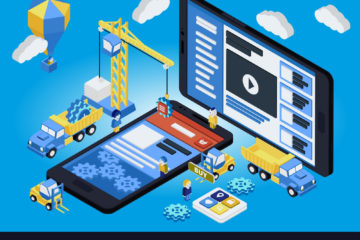How Artificial Intelligence and Machine Learning Shapes People Analytics

by Oleh Rozvadovskyy March 6, 2022
Unlike many other areas of human resource technology, the introduction and extensive use of artificial intelligence (AI) and machine learning in human resource analytics has resulted in a significant expansion in the scope and impact of the technology’s own influence.
While AI and machine learning have been employed in a variety of areas of human resource technology, their use in the field of human resource analytics has had a significant impact. In the context of this article, machine learning algorithms can now automate the extraction of crucial insights from enormous volumes of human data, a method referred to as “augmented” analytics. Some of these systems are referred to as such by Helen Poitevin, a senior analyst at Gartner who specializes in human resources technology.
She notes that some of these technologies are so named because they utilize machine learning to automate the extraction of crucial insights from massive volumes of human data. According to the author, “useful insights are being recovered from vast amounts of human data in an automated form” as a result of the use of machine learning approaches.
This is known as “augmented analytics.” “Augmented analytics” in this context refers to the use of artificial intelligence (AI) and machine learning to automate the extraction of crucial insights from massive volumes of human data. In this context, artificial intelligence and machine learning are being utilized to automate the extraction of essential insights from massive volumes of human data.
Using a combination of augmented analytics and machine learning to prioritize which insights are most important to concentrate on when it comes to a specific individual at a specific time, according to Poitevin’s article, may assist in prioritizing which insights are most important to concentrate on.
A growing number of companies, like Workday, a human resources software business, are relying significantly on data analytics to help human resource personnel pick the most important signs to monitor. This method eliminates the need for a large data analysis crew to go through tremendous volumes of data.
Other firms, such as Workday, are using augmented analytics to assist human resource managers to figure out which performance indicators are the most essential to pay attention to and which performance indicators are less critical to ignore. Mr. Pete Schlampp, Workday’s senior vice president of analytics, discusses the lessons he’s learned about working with data and providing HR professionals with data insights.
Storytelling, according to Schlampp, is a strategy that may aid HR managers in gaining a better knowledge of the cultures and environments in which their businesses operate. Workday employs a technique known as “story-telling” to describe the events leading up to those roadblocks in plain English, helping workers to better understand what is going on at their workplace. This is a critical component of Workday’s overall growth plan, which is detailed below.
A core narrative is delivered to decision-makers in a plain way, according to Schlampp, and it is backed up with supporting metrics and infographics that underline underlying facts and crucial issues that must be taken into account. He believes that decision-makers are provided a simple synopsis of the narrative. If information is presented in an intelligible manner, it will be straightforward for a decision-maker to learn and retain it.
Please keep me informed of your thoughts on this until then, as I’d want to observe how this works in reality before making a final decision. Thank you for taking the time to read this and for taking my request into consideration. Please accept my heartfelt gratitude in advance for taking the time to investigate my request. According to Schlampp, you should only go as far as providing a customer with an analytics “narrative” on female CEO promotion rates to explain how the firm can assist them.
Workday’s Schlampp states that when working with a customer on an analytics “narrative” the business had generated on female executive promotion rates, the company was able to build a report for them. After that, the customer got the report. According to the statistics, the customer’s program was intended to narrow rather than grow the gap, indicating that the client deemed the program a failure. Our client was able to uncover the root cause of the issue as a result of the discovery process and work with its human resources business partners to apply the necessary remedies to bring the situation under control.
Artificial intelligence, according to the authors, is influencing people management in a range of areas, including manufacturing and analytics in learning and development. Integrating people’s professional goals with the competencies required for their jobs has always been tough, according to Elvis Ha, director of product management at CornerstoneOnDemand, a cloud computing service provider with headquarters in Santa Monica. He thinks the tide is turning in his favor, which is encouraging. He says that investigators’ incapacity to make the connections they require during human resources investigations stems from a lack of expertise.
The adoption of artificial intelligence (AI) technology is another important issue. Thanks to advancements in artificial intelligence technology, employees may be able to get learning material that is immediately relevant to the skills required for a certain task in the near future, rather than having to wait. Employees’ abilities are tested using this technology, and they are then offered learning materials that are suitable for their level of proficiency. The word “machine,” which stands for “machine learning,” may be used to characterize the features of this kind of technology. It’s also a term for the characteristics of machine learning, which is a kind of artificial intelligence.
CornerstoneOnDemand, as previously noted by Ha, employs artificial intelligence to assist in the finding of the most appropriate training methodologies for its customers’ requirements. A vendor may utilize historical data to identify the best day to deliver a certain learning program in order to enhance the percentage of participants who finish it successfully. All of this is done in order to increase the number of people who finish the program effectively, which is the program’s ultimate aim in terms of completion rates.
Pavooq (https://pavooq.com/) is an online platform that helps to solve the problem of non-transparent communication and team cohesion.







No Comment